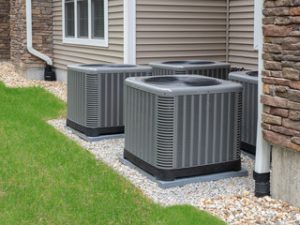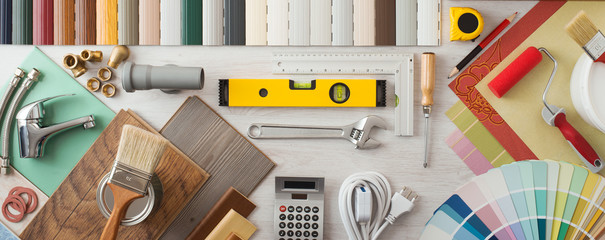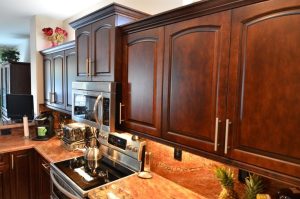Cincinnati Air Conditioning has become an essential part of everyday life, offering comfort and relief during the hottest months of the year. Whether it’s in homes, offices, or commercial spaces, air conditioning systems help maintain ideal indoor temperatures, ensuring comfort, productivity, and better air quality. Beyond cooling, modern air conditioning systems also play a vital role in regulating humidity, filtering pollutants, and supporting overall health and well-being. As technology advances, the importance of efficient and reliable air conditioning continues to grow, making it a critical aspect of modern living.

Understanding How Air Conditioning Works
Air conditioning systems function by extracting heat from indoor spaces and releasing it outside, leaving the air cooler and more comfortable. The process typically involves a refrigerant circulating through coils, absorbing heat, and transferring it outdoors through a compressor and condenser unit. The cooled air is then distributed throughout the building using ducts or split system blowers.
There are various types of air conditioning systems available, each designed to meet different needs and building structures. Central air systems, for instance, are commonly used in larger homes and commercial buildings, providing even cooling throughout multiple rooms. Split systems are more flexible, with indoor and outdoor units connected by refrigerant lines, ideal for residential or small office use. Portable and window units, on the other hand, offer a cost-effective solution for smaller spaces. Understanding how these systems operate helps homeowners and business owners make informed decisions about the best air conditioning setup for their property.
The Importance of Professional Air Conditioning Installation
Proper installation is the foundation of any efficient air conditioning system. Even the most advanced and high-performance unit can underperform or fail prematurely if it is not installed correctly. Professional air conditioning installation ensures that the system is properly sized, securely fitted, and optimized for maximum performance.
An experienced HVAC technician evaluates several factors before installation, including building size, insulation quality, window placement, and the number of occupants. These elements determine the appropriate system size and capacity to deliver balanced cooling throughout the space. Improperly sized units—whether too large or too small—can lead to uneven cooling, increased energy consumption, and faster wear and tear.
Professional installers also handle electrical connections, refrigerant charging, and thermostat calibration to ensure the unit operates safely and efficiently. Investing in professional installation not only enhances comfort but also maximizes energy efficiency and extends the lifespan of the air conditioning system.
Key Benefits of a Reliable Air Conditioning System
The advantages of having a well-functioning air conditioning system go beyond simple temperature control. Reliable air conditioning offers a range of benefits that impact comfort, health, and energy use.
- Consistent Indoor Comfort – Air conditioning maintains a steady indoor temperature, preventing discomfort caused by extreme heat and humidity.
- Improved Air Quality – Modern systems filter out dust, pollen, and other airborne pollutants, reducing allergens and promoting cleaner indoor air.
- Energy Efficiency – Energy-efficient air conditioners use advanced technology to reduce energy consumption, leading to lower electricity bills.
- Better Sleep Quality – A cool and comfortable environment helps improve sleep, allowing the body to rest more effectively.
- Enhanced Productivity – In workplaces, air conditioning supports concentration and reduces fatigue, improving employee efficiency and morale.
These benefits highlight why investing in a dependable air conditioning system is not just about comfort but also about maintaining health, productivity, and cost savings over time.
Common Types of Air Conditioning Systems
Different properties require different cooling solutions depending on size, layout, and usage. Below are the most common types of air conditioning systems used today:
- Central Air Conditioning Systems – These are ideal for large buildings and homes, providing even cooling through ductwork. They are efficient, quiet, and capable of managing multiple zones.
- Ductless Mini-Split Systems – Perfect for properties without ductwork, these systems offer flexible installation and individual temperature control in each room.
- Window Units – Compact and affordable, window air conditioners are best suited for small spaces or single-room cooling.
- Portable Air Conditioners – Portable units provide flexibility by allowing users to move them between rooms, though they may be less efficient than permanent systems.
- Hybrid and Smart Systems – Newer air conditioning models use advanced technology to switch between energy sources or connect to smart thermostats, optimizing performance and energy savings.
Understanding the strengths of each system type helps consumers choose the most practical and energy-efficient option for their specific needs.
The Importance of Regular Air Conditioning Maintenance
Routine maintenance is essential to keeping air conditioning systems running smoothly and efficiently. Over time, dust and debris accumulate in filters and coils, reducing airflow and system performance. Neglecting maintenance can lead to higher energy bills, frequent breakdowns, and even premature failure of critical components.
During a maintenance check, HVAC professionals perform a comprehensive inspection that typically includes:
- Cleaning or replacing air filters.
- Checking refrigerant levels and inspecting for leaks.
- Examining and cleaning the condenser and evaporator coils.
- Inspecting electrical components and thermostat settings.
- Testing system performance and airflow balance.
Regular maintenance not only helps prevent costly repairs but also enhances indoor air quality and ensures the system operates at peak efficiency. Many experts recommend scheduling maintenance at least twice a year—before the summer cooling season and after it ends—to keep the system in top condition.
Common Air Conditioning Problems and Solutions
Even well-maintained air conditioning systems can experience issues over time. Identifying and addressing these problems early helps prevent more significant damage and expensive repairs. Some common AC issues include:
- Poor Airflow – Blocked filters or clogged ducts can restrict airflow, reducing cooling efficiency. Regular cleaning and filter replacement can resolve this issue.
- Refrigerant Leaks – Low refrigerant levels can cause poor cooling performance and potential compressor damage. Professional technicians can locate and seal leaks before recharging the system.
- Thermostat Malfunctions – A faulty thermostat can cause inconsistent temperatures or prevent the system from turning on. Recalibration or replacement may be necessary.
- Frozen Coils – Dirty filters or restricted airflow can lead to frozen evaporator coils. Allowing the coils to thaw and cleaning filters usually restores normal operation.
- Unusual Noises – Grinding, rattling, or buzzing sounds often indicate loose parts or worn components that require professional attention.
Prompt repairs and professional diagnostics ensure that small issues don’t turn into major problems that disrupt comfort or require full system replacement.
Energy Efficiency and Sustainable Cooling Solutions
Energy efficiency is one of the most important considerations in modern air conditioning. As electricity costs rise and environmental concerns grow, more homeowners and businesses are prioritizing systems that offer sustainable performance. Energy-efficient air conditioning units use advanced compressors, variable-speed fans, and smart thermostats to reduce energy consumption without sacrificing comfort.
Some strategies to improve air conditioning efficiency include:
- Upgrading to a High-Efficiency Unit – Newer models have higher SEER (Seasonal Energy Efficiency Ratio) ratings, meaning they consume less energy to produce the same cooling output.
- Using Programmable or Smart Thermostats – Smart thermostats adjust cooling settings automatically based on occupancy and time of day, minimizing energy waste.
- Proper Insulation and Sealing – Well-insulated spaces retain cooled air more effectively, reducing the strain on air conditioning systems.
- Regular Filter Replacement – Clean filters enhance airflow and reduce energy usage.
These sustainable solutions not only lower utility costs but also contribute to a greener, more eco-friendly environment.
The Health Benefits of Air Conditioning
Air conditioning provides more than just temperature control—it also supports health and wellness. By filtering out airborne particles, allergens, and contaminants, air conditioning systems improve indoor air quality and reduce exposure to irritants that can cause respiratory problems. Proper humidity control prevents mold growth and reduces the presence of dust mites, contributing to a cleaner living environment.
Additionally, air conditioning helps protect against heat-related illnesses during extremely hot weather, which is especially important for children, the elderly, and those with medical conditions. A reliable air conditioning system thus promotes both physical comfort and long-term health.
When to Consider Air Conditioning Replacement
While regular maintenance can extend the lifespan of an air conditioning unit, no system lasts forever. Over time, efficiency declines, repairs become more frequent, and operating costs increase. It may be time to consider replacement when:
- The system is over 10–15 years old.
- Energy bills have steadily increased despite regular maintenance.
- The unit struggles to maintain consistent cooling.
- Repairs are becoming costly and frequent.
- The system uses outdated refrigerants that are no longer eco-friendly.
Upgrading to a new energy-efficient model can result in significant savings on energy costs and improved comfort. Modern systems are designed with advanced features that enhance performance, reduce noise, and minimize environmental impact.
Choosing the Right Air Conditioning Service Provider
Selecting a qualified air conditioning service provider is just as important as choosing the right equipment. Experienced professionals ensure that installations, repairs, and maintenance are performed correctly and safely. When searching for an air conditioning company, look for:
- Proper Licensing and Certification – This ensures that technicians have the training and expertise to handle complex AC systems.
- Transparent Pricing and Estimates – Honest providers offer clear, upfront pricing with no hidden charges.
- Emergency Services – Availability around the clock ensures help is there when unexpected issues arise.
- Strong Customer Reviews – Positive feedback and testimonials reflect reliability and customer satisfaction.
- Maintenance Plans – Regular service plans help keep systems running efficiently while minimizing future repair costs.
Working with a professional provider guarantees that your air conditioning system remains reliable, efficient, and long-lasting.
Air conditioning is a cornerstone of modern comfort, providing cool, clean, and breathable air that enhances daily living and working conditions. Whether for residential or commercial applications, air conditioning systems deliver more than just temperature control—they contribute to health, productivity, and energy savings.
From professional installation to regular maintenance and timely repairs, every step in managing an air conditioning system requires expertise and attention to detail. Choosing energy-efficient systems and qualified technicians ensures long-term reliability and optimal performance. With the right care, an air conditioning system can provide years of comfort, cost efficiency, and peace of mind—making it one of the most valuable investments for any property.

